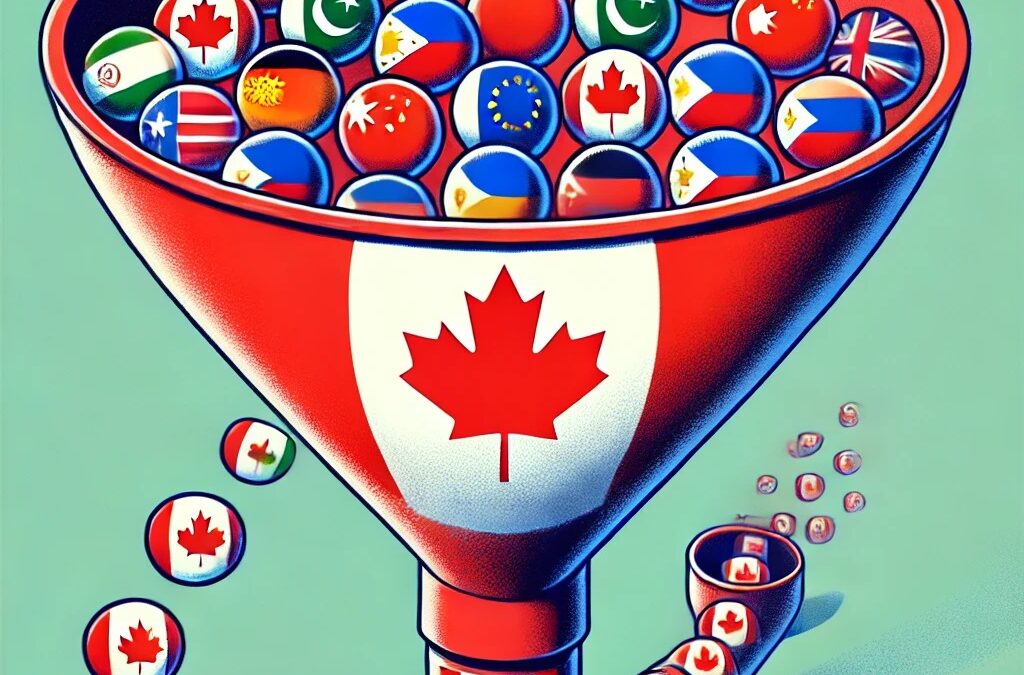In an important shift for Canadian immigration policy, the Immigration, Refugees and Citizenship Canada (IRCC) recently announced its 2025-2027 Immigration Levels Plan, marking a reduction in immigration targets and introducing new temporary resident caps for international students and foreign workers. This plan, aimed at achieving a balanced migration system, is Canada’s response to current economic, social, and housing conditions. Here’s a closer look at what’s changing for immigration numbers in Canada for 2025.
A Balanced Approach to Immigration Targets
The IRCC’s new plan aligns with a “whole-of-society” strategy on the immigration canada’s intended 2025 numbers, incorporating consultations with provinces, communities, and stakeholders to create a system responsive to both newcomer needs and local capacities. With this comprehensive approach, the government will reduce the share of temporary residents to 5% of the total population by 2026. This change is aimed at managing community capacity and supporting long-term sustainability.
Permanent Resident Targets Reduced
One of the most notable shifts in the 2025 plan is the reduction in permanent resident targets. Immigration Canada numbers for 2025 are now set at 395,000, decreasing to 380,000 in 2026 and 365,000 by 2027. Despite the lower overall targets, the focus remains on boosting economic categories, with 62% of total admissions set for economic programs by 2027. Special attention is directed at critical sectors like healthcare and skilled trades to help address pressing labour needs.
Additionally, the government has dedicated resources to help in-Canada temporary residents transition to permanent status, especially for international students and temporary workers who have already established lives and careers in Canada.
Temporary Resident Targets and New Caps
To better manage the temporary population, IRCC introduced specific caps for international students and temporary foreign workers. In 2025, temporary resident targets are set at 673,650, with a cap on international students representing 45% of this figure. By 2026 and 2027, international students will comprise a larger portion (59% and 56% of temporary residents, respectively), while the rest will be allocated to temporary workers under the International Mobility Program (IMP) and Temporary Foreign Worker (TFW) Program.
This cap, along with a recently implemented limit on most study permit applications, helps regulate community growth, resource allocation, and housing needs, all essential for sustainable immigration.
Economic Priorities and Francophone Immigration Targets
The economic immigration category remains a cornerstone of the 2025 plan, with targeted admissions under “Federal Economic Priorities” and additional emphasis on Francophone immigration outside Quebec. Francophone admissions targets are set to rise progressively from 8.5% in 2025 to 10% in 2027, aiming to support the demographic growth of Francophone minority communities.
Conclusion
Canada’s 2025-2027 Immigration Numbers/ Levels Plan reflects is a bold change, given the constant changes in the population of various types of visa holders and visa candidates. These adjustments to both permanent and temporary resident streams are crafted to align with Canada’s capacity and attempt to provide a manageable path forward for newcomers and Canadians alike. This may increase the cost of labour in low-wage skilled jobs hopefully spurring innovation amongst Canadian employers, rather than business closings due to higher labour wage costs. Given the likely increase in refusals of visa applications, applicants should consult with legal professionals to navigate these challenges effectively.

